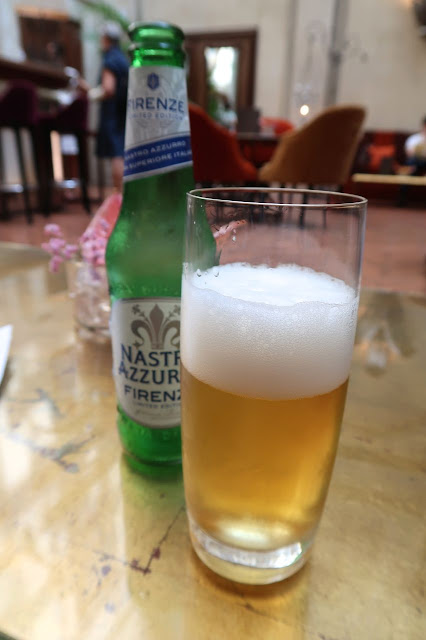In Siena the architecture soars and lifts your soul. This is Italy before the Renaissance, magically transported to the modern day. With its narrow streets and steep alleys, a Gothic Duomo, a bounty of early Renaissance art, and the glorious Palazzo Pubblico overlooking its magnificent Campo, Siena is often described as Italy's best-preserved medieval city. Originally a Roman colony founded by Augustus over 2,000 years ago called Saena Julia, Sienese myth suggests that Siena was founded by Senius and Aschius, two sons of Remus and thus nephews of Romulus, after whom Rome was named. Supposedly after their father's murder by Romulus, they fled Rome, taking with them the statue of the she-wolf suckling the infants, thus appropriating that symbol for the town. In the 1300s, Siena was one of Europe's largest cities and a major military force, in a class with Florence, Venice, and Genoa, but weakened by a disastrous plague and conquered by her Florentine rivals, Siena became a backwater for six centuries.
However, Siena's loss became our sightseeing gain, because its political and economic irrelevance preserved its Gothic-era identity, most notably its great, gorgeous central piazza — the Campo — one of the most remarkable squares in Italy, is divided into seventeen wards into which the town is divided and still manages to play an active part in the life of the city, culminating in the famous Palio horserace which has survived as perhaps the most spectacular annual festival in Italy — and the Duomo sitting atop Siena's highest point and visible for miles around, the its bold white and dark-green stripes. Inside and out, it's lavished with statues and mosaics. Declared by UNESCO as a World Heritage Site, the historic centre of Siena is the embodiment of a medieval city with red-brick lanes cascading every which way. Because Siena's steep lanes go in anything but a straight line, it's easy to get lost — but there's no rush to get found. As you wander, you'll be tempted by Sienese specialties in the shops along the way with gourmet pasta, vintage Chianti, wild boar prosciutto, extra virgin olive oil, and panforte. No matter, life is a journey, and Siena is a gem to explore to your hearts content.
The spectacular Duomo di Siena
The areas around and above the doors, as well as the columns between the portals, are richly decorated with acanthus scrolls, allegorical figures and biblical scenes
The exterior and interior of the Duomo are constructed of white and greenish-black marble in alternating stripes, which are the symbolic colors of Siena
Breathtakingly beautiful, the interior of the Duomo di Siena is one on the most spectacular
in all of Italy
The horizontal moulding around the nave and the presbytery contains 172 plaster busts of popes dating from the 15th and 16th centuries starting with St. Peter and ending with Lucius III
The hexagonal dome is topped with Bernini's gilded lantern, like a golden sun with trompe l'oeil coffers painted in blue with golden stars
The marble high altar was built in 1532 by Baldassarre Peruzzi
The inlaid marble mosaic floor is one of the most ornate of its kind in Italy,
covering the whole floor of the cathedral
Detail of the Ruota della Fortuna — The Wheel of Fortune — which communicates
the mutability of fortune
Mosaic showing Romulus and his twin brother Remus being fed by the she wolf
Hanging sanctuary lamp keeps the eternal light aglow
Beautiful wooden choir stalls made between 1363–1397 and extended in the 16th century, with inlaid wooden panels by Fra’ Giovanni da Verona in 1503
Detail of choir stall with inlaid marquetry
Bronze gate detail in the Sacristy
The Battistero di San Giovanni was built between 1316 and 1325 by Camaino di Crescentino
The exquisite frescoes that cover the walls, arches and ceiling are by Vecchietta,
Benvenuto di Giovanni, the school of Jacopo della Quercia
Holding a handheld mirror to reflect the ceiling frescoes can often help so as not to fall over backwards while admiring the artwork
The marble shrine on the font was designed by Jacopo della Quercia between 1427 and 1429,
with some sculptures by Donatello
A lion shaped gargoyle that was originally from the Duomo
Painting by the school of Giovanni Pisano in the 14th century
Filming of a Bollywood film outside the Baptistry
The Bollywood dancers on a short break between sets
Grand Hotel Continental Siena Lobby Bar
A cold beer at Grand Hotel Continental in Palazzo Gori Pannilini, built in the 17th century by the Chigi Pope Alexander VII for his niece Olimpia
A trio of snacks arrive with our beer: chips, olives and pistachios
Located in the heart of Siena and steps from the famous Piazza del Campo, Ristorante da Guido serves classic Tuscan cuisine with typical Senese dishes made with the regions local truffles and Tuscany's signature dish Bistecca alla Fiorentina, made using Chianina beef raised in the Chiana Valley. In the cellar, there are over 500 wines, especially Tuscan wines of Siena such as Chianti Classico, Chianti, Brunello di Montalcino, Nobile di Montepulciano and Vernaccia di San Gimignano, perfect with Pappardelle con ragù d’anatra or La tagliata Toscana.
Interior of Ristorante da Guido
The menu features classic Tuscan dishes
Focaccia and homemade breads
A glass of cold Tuscan Rosata
A robust Rosso di Montalcino
L'ouva au Spinaci e crema di pecorino con tartufo Toscana
The egg was perfectly poached once pierced
Tortino di peperoni con crema di caprino ed acciughe
Pici fatti in casa al “cacio e pepe”
Malfatti di ricotta, zucca gialla e provola affumicata su crema di rucola con pancetta croccante: “Malfatti” with ricotta cheese, pumpkin and smoked provolone on rocket cream with crispy bacon
Macchiato
Due biscotti








































No comments:
Post a Comment